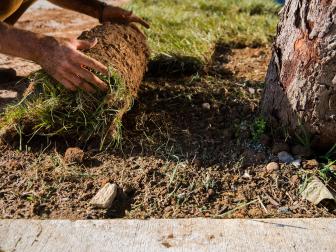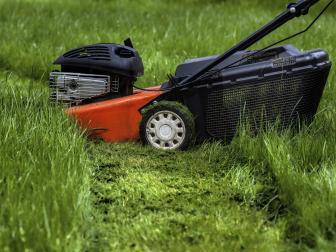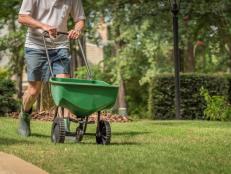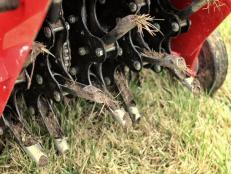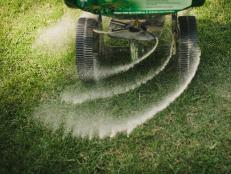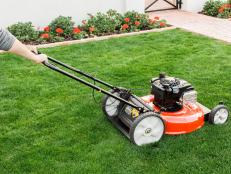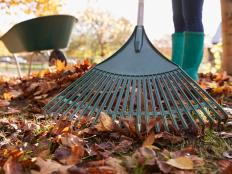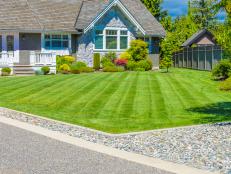How to Repair Bald Spots in Your Lawn
Learn how to fix bald spots in your lawn by repairing with seed or patching with sod.
Does your lawn have bald spots that need repair? We can help you with some easy steps for patching or seeding those problem areas and getting the lush lawn you're after.
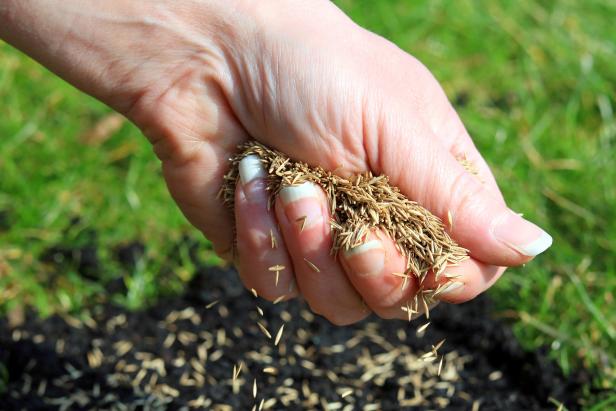
Shutterstock/Dean Clarke
Before turf can be treated, you need to determine the cause of the problem. If you eliminate fungi, bugs, grubs or other pests as causes, you may just need some seeds.
Once the ground temperature warms to about 52 degrees Fahrenheit, seeds will grow. Good seed-to-soil contact will get the seeds germinating fast.
How to Repair a Lawn With Seed
- Using a sharp spade or shovel, cut the area around the dead turf.
- Use the flat part of the spade to lift off the dead turf.
- Because you are removing at least a couple of inches of thatch and grass, fill in the area with some clean topsoil to keep it level with the rest of the yard.
- Rake out the area until it is smooth and there are no big clumps in the soil.
- Cast a thin layer of seeds on the area, and then gently rake the seeds into the topsoil.
- Cover it with straw to hold in moisture and protect the seeds from birds.
If your lawn seems thin all over, try overseeding it. The basics are the same as patching.
How to Repair a Thin Lawn by Overseeding
- Rake the area well, picking up any leaves and debris in the turf.
- Cast the seeds over the turf, and then spread about a half an inch of compost or topsoil on the lawn.
- To get good seed-to-soil contact, gently rake the seeds and soil into the grass.
- Water the seeds in the early morning and evening until they germinate.
- Once they start to sprout, water the lawn every day. It will be ready for a light application of fertilizer before the heat of summer begins.
If the turf has been damaged by pet urine, it will resemble a patch of straw in the center with a dark green ring around the outside. The urine acts much like a fertilizer burn. Ohio State University scientists recommend watering the area to dilute the concentration of urine. If you are able to keep pets off the lawn, the grass can be reseeded.
Patching Your Lawn With Sod
Bald spots can be repaired quickly by filling them in with cuttings from rolls of sod, which you can purchase from a garden center or directly from a sod farm.
For best results, you'll want to make sure your soil is prepped correctly and seams between patches are tight.
See this step-by-step guide to laying sod. Here are the essential steps to patching bald spots with sod.
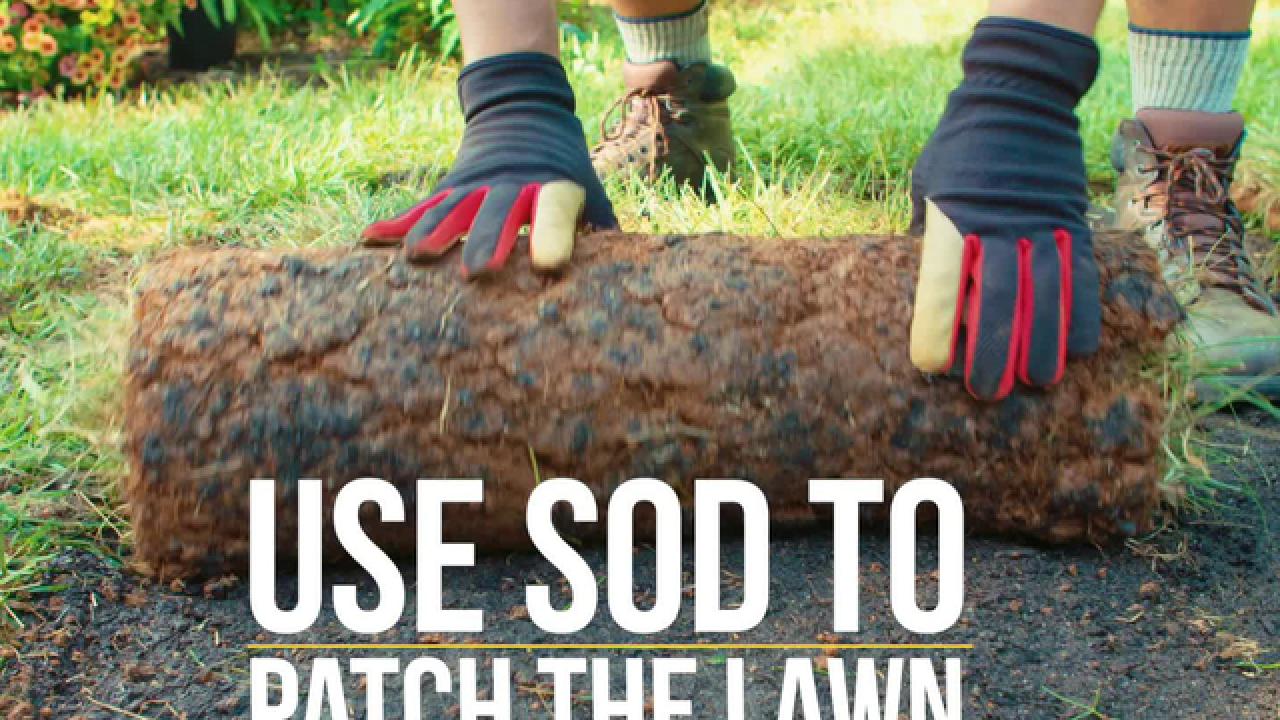
- Cut out the patch area in a rectangular shape. Use a shovel or sharp spade to dig out the brown grass — roots and all — cutting out a little beyond the patchy area and into the green grass, and several inches deep.
- Prepare the area with compost and level. Loosen soil in the patch area with a rake to give the new grass roots a welcome spot to sink into. Add organic matter and even out the area so the new sod will lay at the same level as the existing grass.
- Cut and lay the sod. Cut a piece of sod the same size as your patch area. Create tight seams between patches but don't overlap or strech the sod, and push sod firmly against the soil.
- Water your new sod. Water sod thoroughly, and then continue to water daily for two weeks unless rain arrives. But don't let water puddle on your new sod.
- Wait to mow. Before mowing, make sure the new sod has knitted into the soil by gently tugging on it. You'll need to wait for at least 10 days. See this guide to caring for new sod.
More Lawn Care Tips
12 Spring Lawn Care Tips to Ensure a Beautiful Yard All Year Long 13 Photos
Get our spring to-do list for maintaining a lush, healthy lawn year-round.
Don't Let the Weeds Win, Learn the Right Way to Mow 13 Photos
Grow a healthy, lush lawn with these 13 essential mowing tips.






